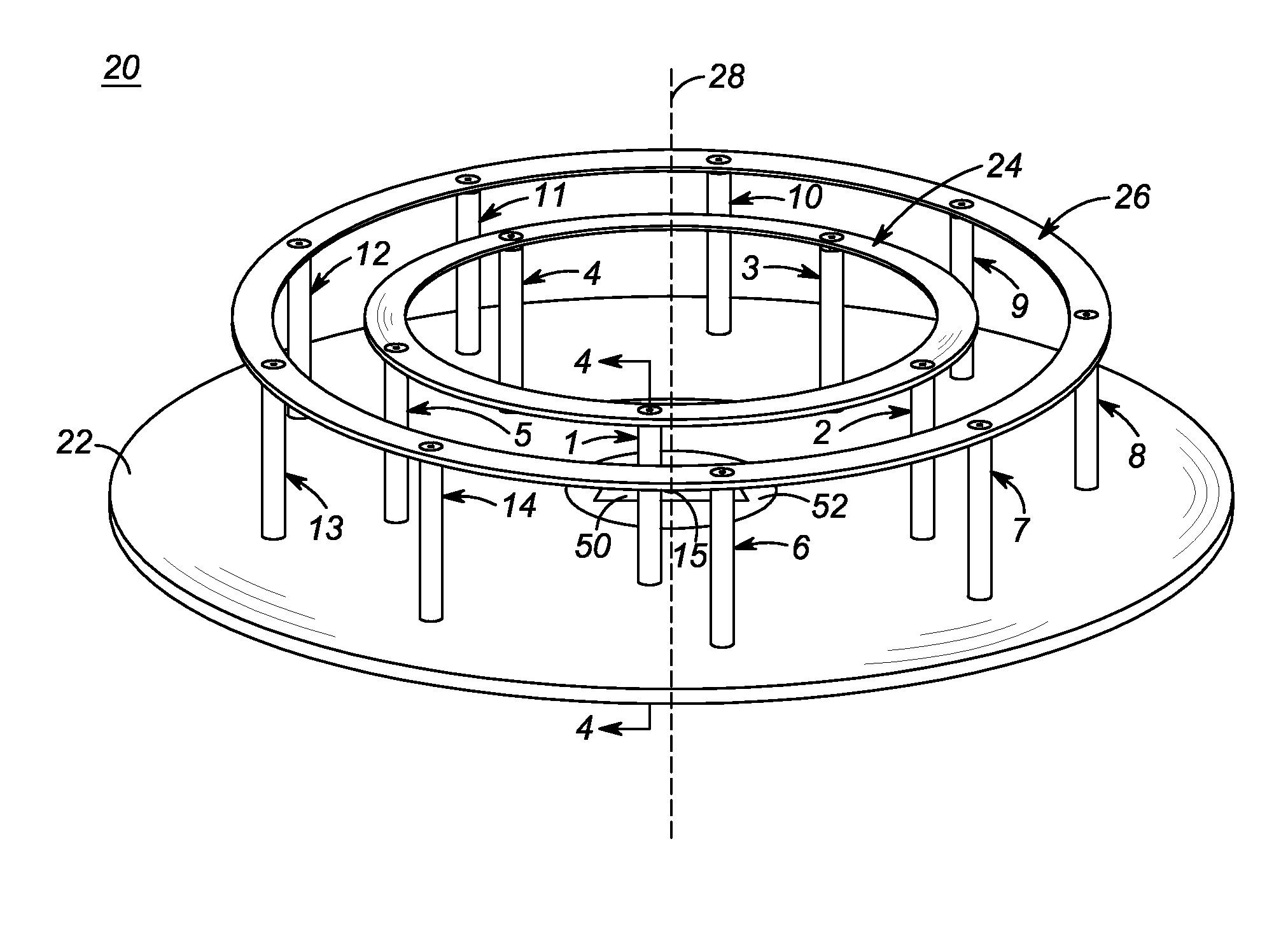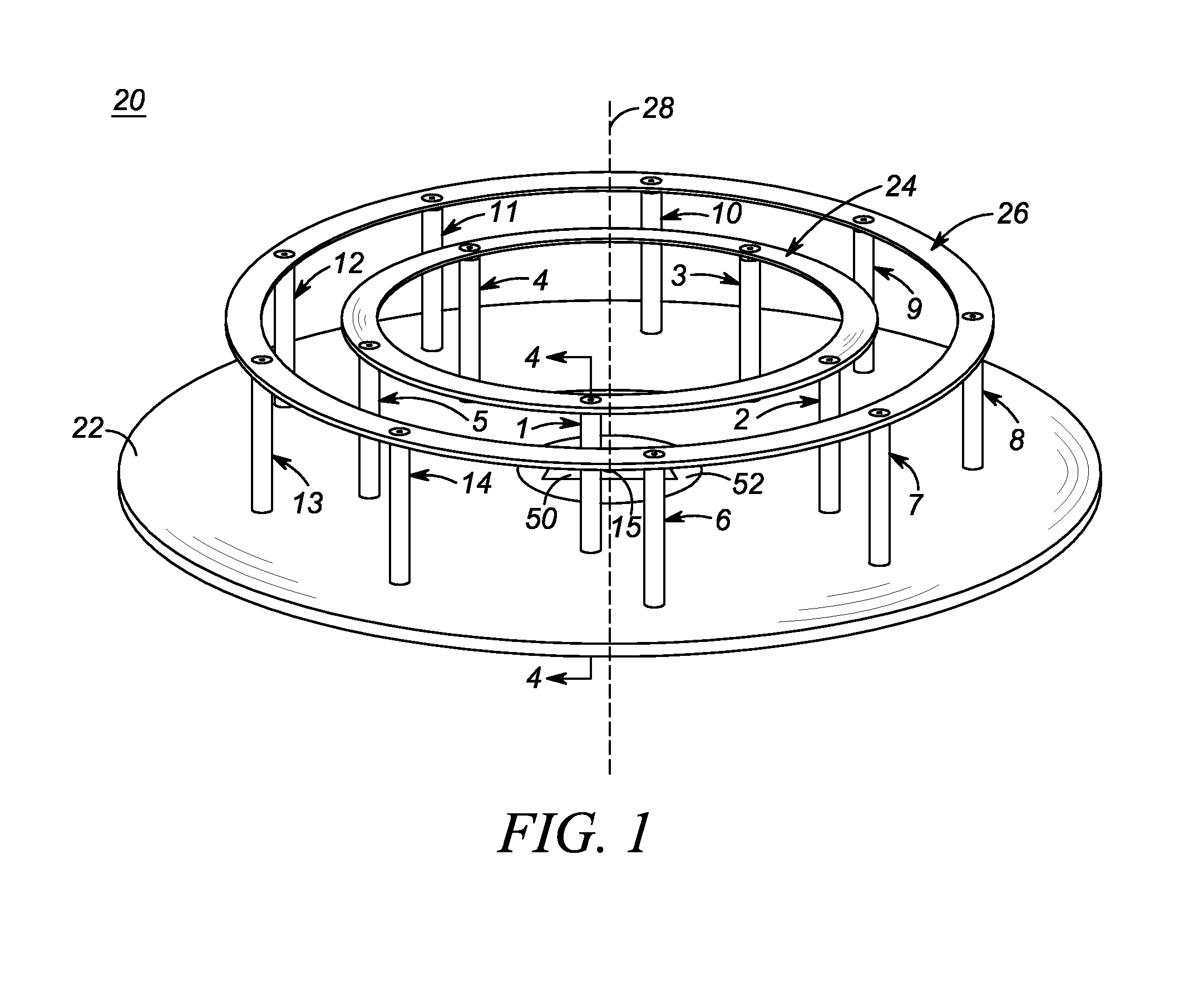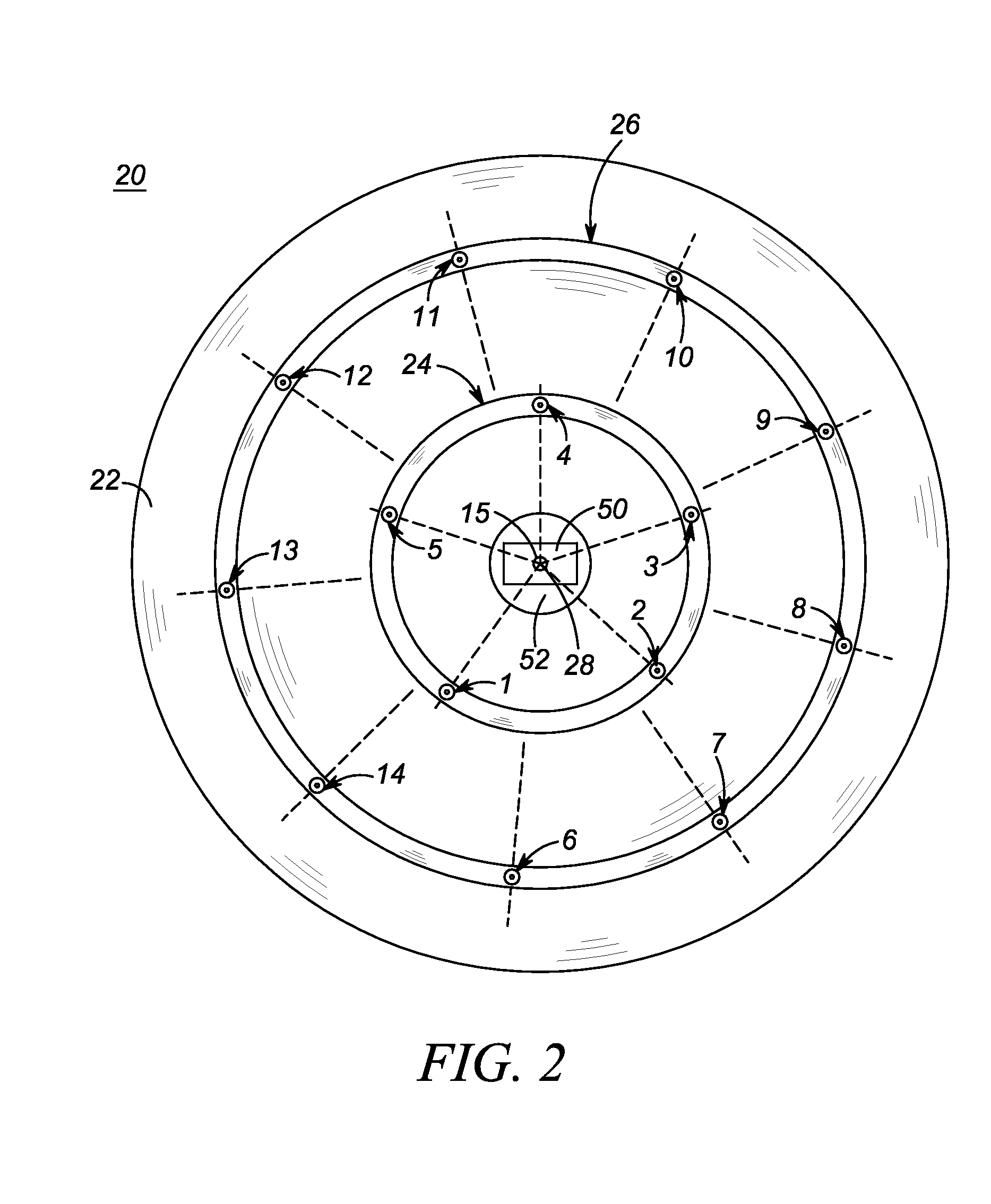Low profile, antenna array for an RFID reader and method of making same
a low-profile, antenna array technology, applied in the direction of waveguide type devices, particular array feeding systems, instruments, etc., can solve the problems of increasing cost and size, limiting the likelihood of multi-path signal replicas confounding the receiver of the reader, and increasing the complexity of the array
- Summary
- Abstract
- Description
- Claims
- Application Information
AI Technical Summary
Benefits of technology
Problems solved by technology
Method used
Image
Examples
Embodiment Construction
[0015]One aspect of this disclosure relates to an antenna array that includes a ground support, e.g., a ground plane; an electrically conductive, first endless element, e.g., a first circular element, mounted on, and at an elevation away from, the ground support, the first endless element extending about a central axis at a first distance transversely of the central axis along a first perimeter; and a plurality of first ports successively arranged, preferably equiangularly, apart along the first perimeter of the first endless element about the central axis for conveying radio frequency signals in a first operating band of frequencies. The first perimeter is substantially equal to an odd multiple of one-half of a guided wavelength at a center frequency of the first operating band. Each adjacent pair of first ports is successively spaced apart by a first spacing constituting a whole multiple of one-half of the guided wavelength at the center frequency of the first operating band. Each...
PUM
| Property | Measurement | Unit |
|---|---|---|
| frequency | aaaaa | aaaaa |
| distance | aaaaa | aaaaa |
| impedance | aaaaa | aaaaa |
Abstract
Description
Claims
Application Information
 Login to View More
Login to View More - R&D
- Intellectual Property
- Life Sciences
- Materials
- Tech Scout
- Unparalleled Data Quality
- Higher Quality Content
- 60% Fewer Hallucinations
Browse by: Latest US Patents, China's latest patents, Technical Efficacy Thesaurus, Application Domain, Technology Topic, Popular Technical Reports.
© 2025 PatSnap. All rights reserved.Legal|Privacy policy|Modern Slavery Act Transparency Statement|Sitemap|About US| Contact US: help@patsnap.com



